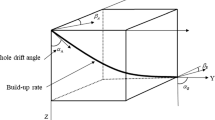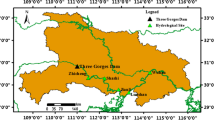Abstract
Back propagation (BP) neural network has been widely used for various data predictions in application. One of the challenging issues in various applications of BP neural network is how to improve its reliability as well as its stability. In this paper, by using a prototype for the forecast of atmospheric radiation and atmospheric ozone concentration in the state of Ohio, USA, we show that a direct use of the BP neural network may lead to the loss of forecast reliability during its evolutionary process. Under the framework of Verhulst biological model with embedding cognitive computation, we show that one can effectively reduce the dispersion of pure randomness of data sets in BP neural network and improve the prediction of future data by incorporating accumulation generation operation (AGO) into the system. We demonstrate that the integration of a modified gray model and the AGO can offer a more desirable BP neural network algorithm, and both stability and reliability become much improved compared to the direct use of BP neural network reported in current literature.
Similar content being viewed by others
References
Arabacioglu BC. Using fuzzy inference system for architectural space analysis. Appl Soft Comput. 2009;10(3)926–37.
Ben-Israel A, Greville T. Generalized inverses. Berlin: Springer; 2009.
Biacino L, Gerla G. Fuzzy logic, continuity and effectiveness. Arch Math Log. 2002;41(7):643–67.
Bishop JM. A cognitive computation fallacy? Cognition, computations and panpsychism. Cogn Comput. 2009;1:221–33.
Bugmann G, Taylor GJ. Activity propagation in a network of coincidence-detecting neurons. Cogn Comput. 2013;5:307–26.
Chen H, Zeng Z. Deformation prediction of landslide based on improved back-propagation neural network. Cogn Comput. 2013;5:56–62.
Fbregas J, Faundez-Zanuy M. Biometric recognition performing in a bioinspired system. Cogn Comput. 2009;1:257–67.
Gershenfeld NA. The nature of mathematical modeling. Cambridge: Cambridge University Press; 1999.
Gros C. Cognitive computation with autonomously active neural networks: an emerging field. Cogn Comput. 2009;1:77–90.
Ingber L. Computational algorithms derived from multiple scales of neocortical processing. Cogn Comput. 2012;4:38–50.
Jiu M, Wolf C, Garcia C, Baskurt A. Supervised learning and codebook optimization for bag-of-words models. Cogn Comput. 2012;4:409–19.
Kingsland SE. Modeling nature: episodes in the history of population ecology. Chicago: University of Chicago Press; 1995.
Wang J, Zhou ZH, Zhou AY. Machine learning and its application. Beijing: Tsinghua University Press; 2006. p. 1–32.
Tu XY. The history of artificial intelligence, the status quo, the prospects. Retrospect and prospect of artificial intelligence. Beijing: Science Press; 2006. p. 55–69.
Tang M, Koch W. An adaptive fuzzy model based process state identification for prediction and control. In: 2004 IEEE conference on cybernetics and intelligent systems, December 1–3, Singapore; 2004.
Atsalakis GS, Valavanis KP. Forecasting stock market short-term trends using a neuro-fuzzy based methodology. Expert Syst Appl. 2009;36(7):10696–707.
Ruan XG. Neural computational science. Beijing: National Defense Industry Press; 2006.
Lin YH, Lee PC, Chang TP. Adoptive and high-precision grey forecasting model. Amsterdam: Elsevier; 2009. p. 9658–62.
MacKay DJC. Information theory, inference, and learning algorithms. Cambridge: Cambridge University Press; 2003.
Mohri M, Rostamizadeh A, Talwalkar A. Foundations of machine learning. Cambridge, MA: The MIT Press; 2012.
Mjolsness E, DeCoste D. Machine learning for science: state of the art and future prospects. Science. 2001;293:2051–5.
Rumelhart DE, McClelland JL. Parallel distributed processing: explorations in the microstructure of cognition. MIT Press, Cambridge, MA; 1986.
Liu Q, Pan WB. Environmental quality assessment. Guangzhou: South China University of Technology Press; 2004. p. 1–52.
Fu L. Gray system theory and its applications. Beijing: Scientific and Technological Literature Publishing House; 1992. p. 1–93.
Wang B. Ji Z. Atmospheric sciences in the new numerical method and its application. Beijing: Science Press; 2006. p. 176–203.
Wang ZY, Chen L, He KY. An improved GM (1,1) prediction model of ozone in the atmosphere of the application of content analysis. Pract Underst Math. 2007;37(22):60–5.
Schapire J. The strength of weak learnability. Mach Learn. 1990;5(2):197–227.
Laurent AP. A neural mechanism for reward discounting: insights from modeling hippocampal–striatal interactions. Cogn Comput. 2013;5:152–60.
Morabito FC, Versaci M. Wavelet neural network processing of urban air pollution. In: Proceedings of the 2002 international joint conference, vol 1; 2002. p. 432–7.
Savitha R, Suresh S, Kim HJ. A meta-cognitive learning algorithm for an extreme learning machine classifier. Cogn Comput. 2013. doi:10.1007/s12559-913-9223-2.
Townsend J, Keedwell E, Galton A. Artificial development of biologically plausible neural-symbolic networks. Cogn Comput. 2013. doi:10.1007/s12559-013-9217-0.
Wen J, Liu H, Zhang S, Xiao M. A new fuzzy K-EVD orthogonal complement space clustering method. Neural Comput Appl. 2013. doi:10.1007/s00521-013-1441-8.
Xiao M, Reeve JD, Xu D, Cronin JT. Estimation of the diffusion rate and crossing probability for biased edge movement between two different types of habitat. J Math Biol. 2013;67(3):535–67.
Xu D, Reeve JD, Wang X, Xiao M. Developmental variability and stability in continuous-time host-parasitoid models. Theor Popul Biol. 2010;78(1):1–11.
Zhang G, Patuwo BE, Hu YM. Forecase with artifical neural networks: the state of the art. Int J Forecast. 1998;14:35–62.
Acknowledgments
The authors would like to thank both editor and anonymous reviewers for their very helpful suggestions which led to the significant improvement of this manuscript. This publication was made possible by NPRP Grant No.[4-451-2-168] from the Qatar National Research Fund (a member of Qatar Foundation). The statements made herein are solely the responsibility of the authors. This research is also supported in part by the Natural Science Foundation of Guangdong Province 10151009001000032, China, and in part by NSF 1021203 of United States.
Author information
Authors and Affiliations
Corresponding author
Rights and permissions
About this article
Cite this article
Gao, X., Huang, T., Wang, Z. et al. Exploiting a Modified Gray Model in Back Propagation Neural Networks for Enhanced Forecasting. Cogn Comput 6, 331–337 (2014). https://doi.org/10.1007/s12559-014-9247-2
Received:
Accepted:
Published:
Issue Date:
DOI: https://doi.org/10.1007/s12559-014-9247-2




